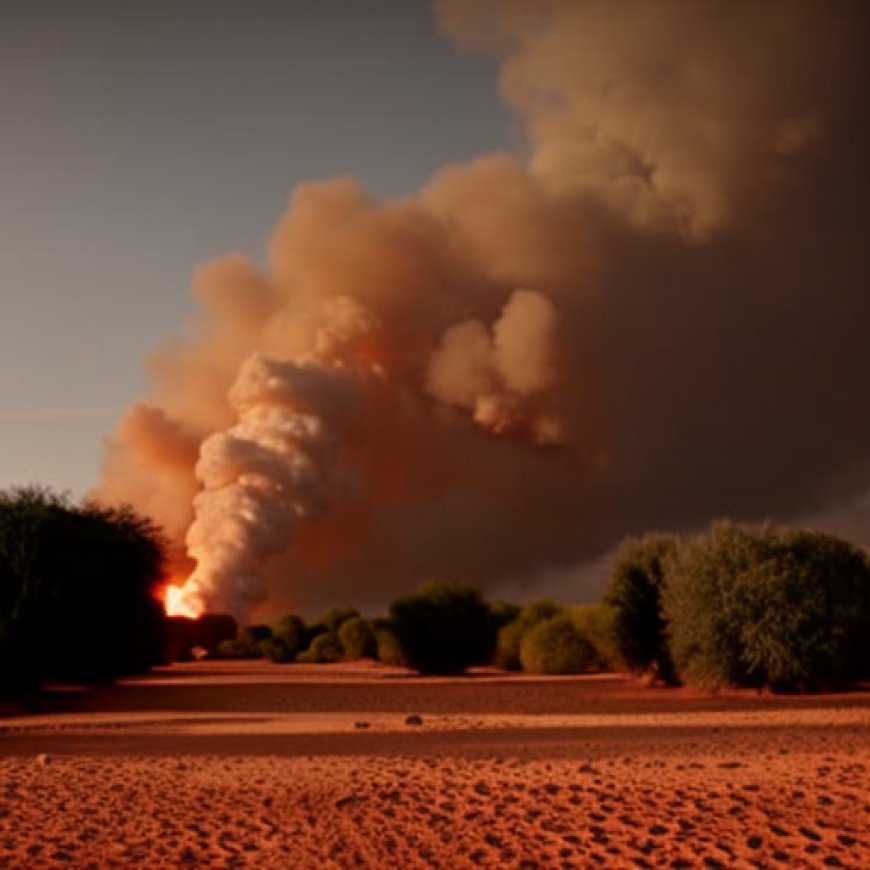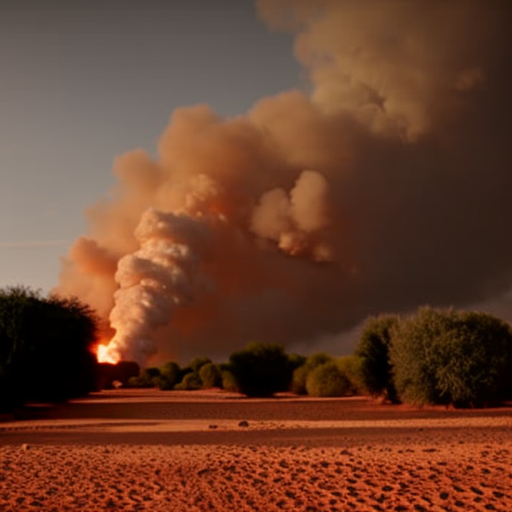‘Human-induced’ climate change caused deadly Sahel heatwave, says study
'Human-induced' climate change caused deadly Sahel heatwave, says study FRANCE 24 English


The Deadly Heatwave in Africa’s Sahel Region

The deadly heatwave that hit Africa’s Sahel region in early April would not have occurred without “human-induced” climate change, according to a study by the World Weather Attribution (WWA) group published on April 18, 2024.
Background
- Issued on:
- 1 min
Advertising
Impact of the Heatwave
The West African nations of Mali and Burkina Faso experienced an exceptional heatwave from April 1 until April 5, with soaring temperatures above 45 degrees Celsius triggering a large number of deaths.
Link to Climate Change
Observations and climate models used by researchers at the WWA showed that “heatwaves with the magnitude observed in March and April 2024 in the region would have been impossible to occur without the global warming of 1.2C to date”, which they linked to “human-induced climate change”.
The report highlighted that the April heatwave would have been 1.4C cooler “if humans had not warmed the planet by burning fossil fuels”. It emphasized that these trends will continue with future warming.
Health Impacts
The length and severity of the extreme heat led to an increase in the number of deaths and hospitalizations in the two countries, despite their populations being acclimatized to high temperatures, according to the WWA.
A lack of data in the affected countries made it impossible to know the exact number of deaths, but the WWA estimated that there were likely hundreds, if not thousands, of other heat-related casualties.
Sustainable Development Goals
Countries in the Sahel region have been facing challenges such as drought and intense rainfall since the 1970s and 1990s, respectively. These environmental changes, coupled with the development of agricultural land, have disrupted the lives of pastoral populations and encouraged the emergence of armed groups.
The Sustainable Development Goals (SDGs) address these issues and aim to combat climate change, promote sustainable agriculture, ensure access to clean water, and foster peace and security in the Sahel region.
(AFP)
SDGs, Targets, and Indicators Analysis
1. Which SDGs are addressed or connected to the issues highlighted in the article?
- SDG 13: Climate Action
- SDG 3: Good Health and Well-being
- SDG 6: Clean Water and Sanitation
- SDG 15: Life on Land
The article discusses the impact of a heatwave in the Sahel region of Africa, which is directly connected to climate change (SDG 13). The heatwave resulted in a large number of deaths and hospitalizations, highlighting the importance of good health and well-being (SDG 3). The article also mentions the dwindling availability of water and pasture, which relates to clean water and sanitation (SDG 6) and life on land (SDG 15).
2. What specific targets under those SDGs can be identified based on the article’s content?
- SDG 13.1: Strengthen resilience and adaptive capacity to climate-related hazards and natural disasters.
- SDG 3.9: By 2030, substantially reduce the number of deaths and illnesses from hazardous chemicals and air, water, and soil pollution and contamination.
- SDG 6.4: By 2030, substantially increase water-use efficiency across all sectors and ensure sustainable withdrawals and supply of freshwater to address water scarcity.
- SDG 15.1: By 2020, ensure the conservation, restoration, and sustainable use of terrestrial and inland freshwater ecosystems and their services.
Based on the article’s content, the specific targets under the mentioned SDGs can be identified. These targets include strengthening resilience and adaptive capacity to climate-related hazards and natural disasters (SDG 13.1), reducing the number of deaths and illnesses from hazardous chemicals and pollution (SDG 3.9), increasing water-use efficiency and addressing water scarcity (SDG 6.4), and ensuring the conservation and sustainable use of terrestrial ecosystems (SDG 15.1).
3. Are there any indicators mentioned or implied in the article that can be used to measure progress towards the identified targets?
- Indicator: Number of deaths and hospitalizations due to extreme heatwaves.
- Indicator: Reduction in greenhouse gas emissions.
- Indicator: Water-use efficiency across sectors.
- Indicator: Conservation and restoration of terrestrial ecosystems.
The article mentions the increase in the number of deaths and hospitalizations due to extreme heatwaves, which can be used as an indicator to measure progress towards SDG 3.9. The reduction in greenhouse gas emissions can serve as an indicator for SDG 13.1. Water-use efficiency across sectors can be measured to track progress towards SDG 6.4, and the conservation and restoration of terrestrial ecosystems can be an indicator for SDG 15.1.
4. Table: SDGs, Targets, and Indicators
| SDGs | Targets | Indicators |
|---|---|---|
| SDG 13: Climate Action | 13.1: Strengthen resilience and adaptive capacity to climate-related hazards and natural disasters. | Reduction in greenhouse gas emissions. |
| SDG 3: Good Health and Well-being | 3.9: By 2030, substantially reduce the number of deaths and illnesses from hazardous chemicals and air, water, and soil pollution and contamination. | Number of deaths and hospitalizations due to extreme heatwaves. |
| SDG 6: Clean Water and Sanitation | 6.4: By 2030, substantially increase water-use efficiency across all sectors and ensure sustainable withdrawals and supply of freshwater to address water scarcity. | Water-use efficiency across sectors. |
| SDG 15: Life on Land | 15.1: By 2020, ensure the conservation, restoration, and sustainable use of terrestrial and inland freshwater ecosystems and their services. | Conservation and restoration of terrestrial ecosystems. |
Behold! This splendid article springs forth from the wellspring of knowledge, shaped by a wondrous proprietary AI technology that delved into a vast ocean of data, illuminating the path towards the Sustainable Development Goals. Remember that all rights are reserved by SDG Investors LLC, empowering us to champion progress together.
Source: france24.com

Join us, as fellow seekers of change, on a transformative journey at https://sdgtalks.ai/welcome, where you can become a member and actively contribute to shaping a brighter future.







